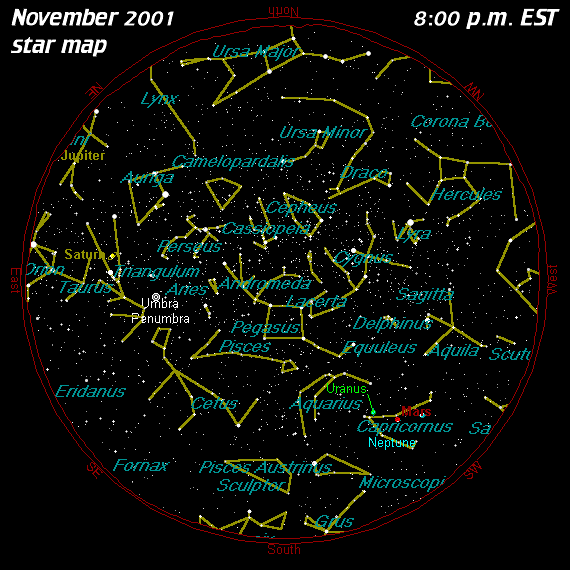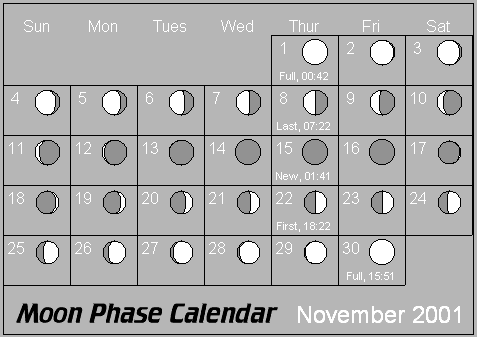

NOVEMBER 2001


NOVEMBER 2001
Large Sky Charts For 9 p.m.: NORTH | EAST | SOUTH | WEST | ZENITH
![[North America Light Pollution]](11-01-NA-light-pollution.jpg) |
|---|
| A 21st century light pollution map of North America... How bad will it get? |
![[Venus at dusk]](leonids01.gif) |
|---|
| NOVEMBER LEONIDS RULE: "X" marks the spot from which thousands of Leonid meteors could be radiating just before dawn on November 18th. Leo will be high in the Southeast. |
![[Venus at dusk]](leonids99numbered.jpg) |
|---|
| LEONID RADIANT: The five Leonid meteors which are visible in this November 18, 1999 photograph, clearly show the head of the Lion and the location from where the meteors will be coming. The first four meteors were imaged within a 10 second period. Photography by Gary A. Becker... |
![[Saturn, Fall 2001]](saturn01.gif) |
|---|
![]() NOVEMBER 19-20, 2001:
The Lion Roared
NOVEMBER 19-20, 2001:
The Lion Roared
![]() NOVEMBER 25, 2001:
Blue Moon Hides Saturn
NOVEMBER 25, 2001:
Blue Moon Hides Saturn
![[Saturn, Fall 2001]](11-01-saturnoccul.gif)

